
views
Protecting Skin from the Sun

Avoid UV exposure. People who live closer to the equator are exposed to more ultra-violet (UV) radiation, so their cells produce more melanin. This excess melanin leads to a darker skin pigmentation that helps the skin protect itself from UV damage. Keeping out of the sun will keep skin from producing extra melanin, which may help the pigment return to a paler state. If your skin is naturally dark, however, staying out of the sun won't do much. Keep out of the sun as much as possible, especially in the late morning and afternoon. If you must be outside while the sun is brightest, try to stick to the shade. Try carrying an umbrella to protect yourself from the sun. A regular black umbrella that’s designed to keep you dry in the rain will also block out at least 90 percent of UV rays. Remember that sunlight and UV rays bounce off concrete, water, sand, snow, and other surfaces. Be aware of your environment!
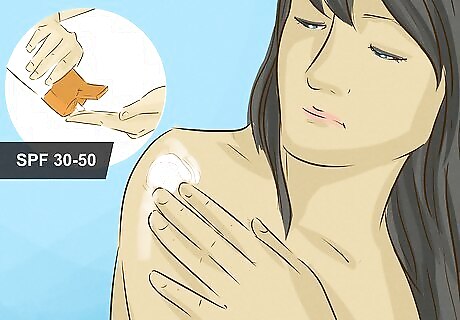
Wear sunscreen. Choose a broad-spectrum sunscreen that protects against UVA (rays that age your skin) and UVB (rays that burn your skin). Find a sunscreen with an SPF (sun-protection factor) between 30 and 50. Any SPF above 50 is not significantly more effective, so don’t worry about finding the highest number. You are still exposed to UV rays in winter, even though it's cooler. Wear sunscreen every day of the year, especially if you enjoy winter sports at high elevations.

Wear protective clothing. Most summer-weight clothing (e.g. cotton garments) does not provide a measurable amount of sun protection. Look for clothes with a UPF (ultraviolet protection) rating. Choose clothes with long sleeves, long hems, and high collars. Consider wearing sunglasses, gloves, and wide-brimmed hats. The sun is necessary for vitamin D production, but most people don’t need more than 20 minutes of uncovered exposure.
Caring for Your Skin and Body

Eat a healthy diet. A well-balanced diet of whole foods, fresh fruits, and plentiful vegetables can do wonders for your skin. A healthy body means healthy skin! In turn, healthy skin is more likely to be free of blemishes, imperfections, uneven complexion issues, and red or dry patches. Eat fruits and vegetables of all colors to ensure you get a rich variety of vitamins and minerals. Eat foods that are rich in vitamin C, which can help make your skin paler. Vitamin C also promotes skin elasticity because it helps the body with collagen production. Consume foods and drinks that are high in antioxidants. This can help fight the signs of aging, including dull, discolored, and wrinkled skin.

Drink water. There is such a thing as too much water, but your skin and body still need to be hydrated for proper health. Drink when you are thirsty, especially if you are exercising. Hydrating your skin should help keep it from becoming dry and flaky, and it may even promote a "glowing" appearance.

Exercise regularly. Cardiovascular exercise is great for your heart and lungs, and it also promotes circulation. Strong circulation is essential for healthy skin. Exercise also reduces stress, which can help alleviate conditions that cause redness (e.g. acne and eczema.) People who suffer from skin conditions like rosacea, psoriasis, or eczema should exercise in cool environments to avoid flare-ups. Moisturize before and after a workout to keep the skin happy.
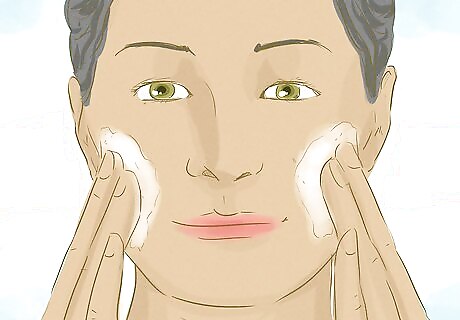
Keep your skin clean and moisturized. To take care of your skin: wash it daily with a gentle cleanser, exfoliate once or twice a week, and moisturize daily. Exfoliation helps remove dead skin cells, which can leave your skin looking fresher and cleaner. Dirt can often contribute to darker-looking skin.

Massage your skin. Like exercise, a skin massage can promote healthy circulation. Before bed, take a few moments to massage lotion or aloe vera thoroughly into your skin.
Using Home Treatments and Lightening Creams
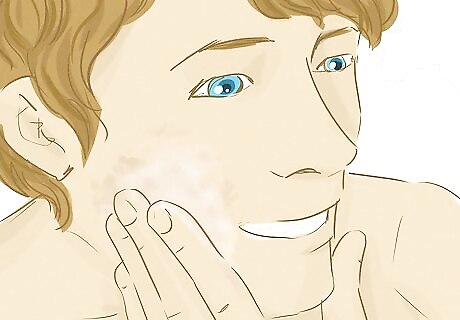
Get rid of your tan. Skin that has been exposed to the sun is often darker due to the increased melanin production. A tan naturally fades as the sun-darkened skin layers dry out and fall away from your body. You cannot actually "un-tan" skin that’s been exposed to UV, but you can certainly help speed the process with gentle exfoliation. To protect your skin, avoid exfoliating more than twice a week.
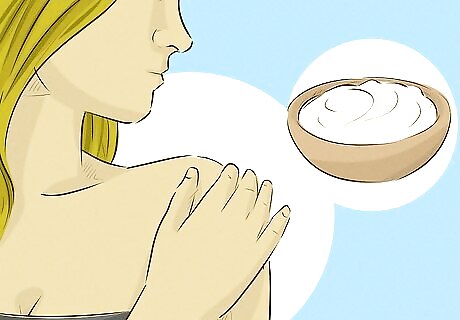
Treat your skin with foods that contain a lot of lactic acid. This may help alleviate dry, scaly, or darkened skin. Use them as creams and exfoliants to remove layers of dead skin. Apply a thin layer of plain yogurt to your skin before bed, and rinse it off with warm water after 10 minutes. Or: make a mask by mixing one tablespoon each of oatmeal, tomato juice, and yogurt. Apply it to the skin, and rinse after 30 minutes.
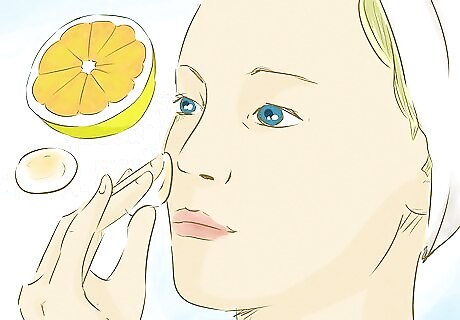
Use a vitamin C treatment. Foods that are high in vitamin C, such as the juice from citrus fruits, can be applied directly to the skin to help exfoliate and lighten dark marks. Do not apply citric acid to your face, and don’t treat your skin with citric acid more than once a week. Apply the juice to your skin with a cotton ball, and rinse after 10 to 20 minutes.

Make a skin-lightening mask from turmeric or chickpea flour. Make a thick but spreadable paste by mixing chickpea flour with rosewater or turmeric with cucumber juice. When the paste is ready, spread it onto your skin. Rinse when it dries, or after 30 minutes.
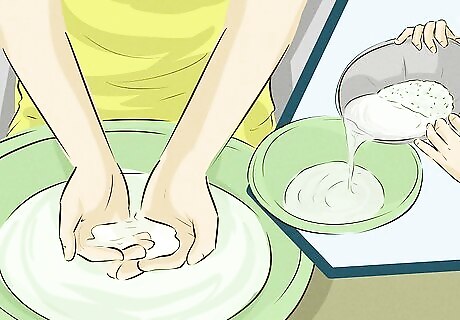
Soak your skin in rice water. This is the water leftover after rinsing rice. You might also rub raw potato on your skin for a lightening effect. Rinse with warm water after 20 to 30 minutes.
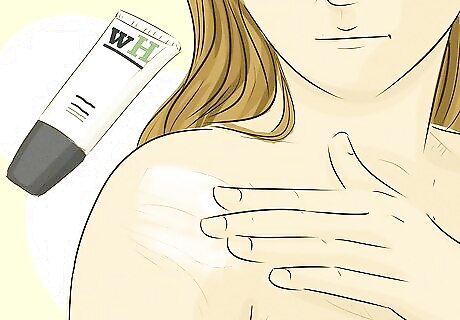
Try a commercial whitening cream. These creams are sold in many beauty and cosmetics departments. They work by reducing the melanin in your skin, although there is no guarantee that they will make your skin as pale as you want. Be sure to talk to your doctor before using commercial creams. Follow all instructions for safe and proper use. Many skin lightening creams use hydroquinone as their active ingredient. Know that some countries have banned this ingredient due to safety concerns. Products containing more than two percent hydroquinone are available by prescription only in the United States. Mercury has been banned from cosmetics in many countries. You can still find these products online, but you will do well to avoid them.
Using Makeup and Clothing
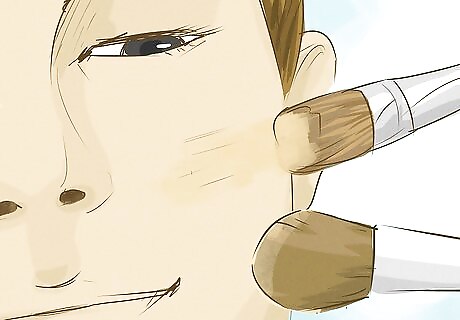
Use foundation and concealer sparingly. These cosmetics items can be used to help create an appearance of paler skin. However, the effect may look artificial if you try to use a shade that's much lighter than your skin. Instead, choose the shade that best matches your skin tone – perhaps even one that is slightly lighter, since you're trying to get paler skin. Use foundation or concealer to cover minor blemishes. This will create a blank canvas on which to apply the rest of your makeup. Try a BB cream to help even out your complexion and cover blemishes or splotchy patches.

Wear dark nail polish, eye makeup, and lipstick. Dark colors on your nails, lips, and eyes will contrast against your skin and make your skin appear paler. Try black, maroon, deep purples, reds, blues, indigo, or cobalt.
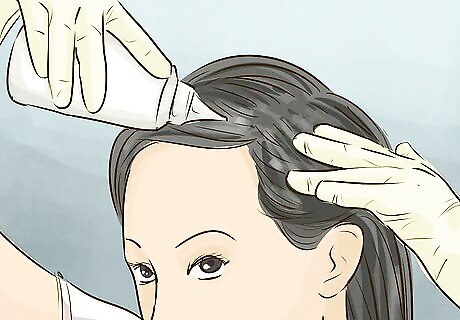
Consider dying your hair. Like dark makeup and other accents, having darker hair can create a contrast with the skin on your face and neck. This can bring out some natural paleness, but it is no permanent solution. There are many henna-based hair dyes available as well, in case you have sensitive skin or want to avoid some of the harsher chemicals present in other dyes.

Wear darker clothes. Pale people who wear pastel or light clothing can look washed out. Darker clothes might create a slight contrast, making your skin look paler by comparison. Keep in mind that this effect will only be noticeable if your skin is already fairly pale.
















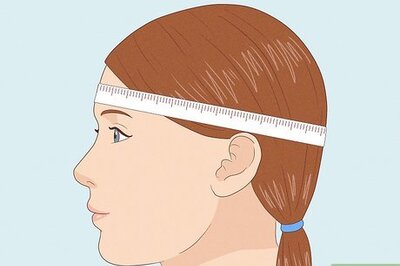

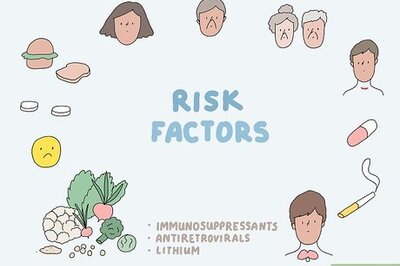
Comments
0 comment